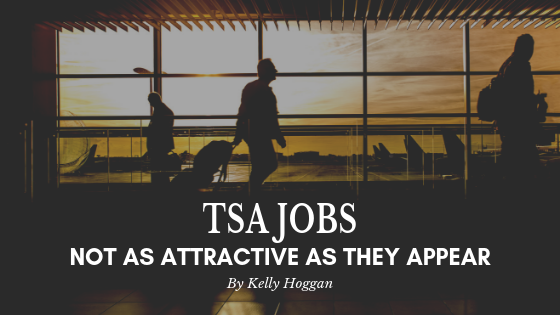With the exception of a few larger airports (which have private security screeners), if you fly commercially in the United States you’re going to have to go through a TSA security checkpoint. To most travelers, “going through security” is a necessary evil or just a minor inconvenience, but one that’s always at least a little stressful regardless. What may be surprising to the traveling public is that many Transportation Security Administration security screeners look at their job in much the same light. Here’s why:
Did you know there are many everyday items and substances that can give pause to TSA screeners as they pass through their x-ray machines? These special x-ray devices create images as they scan passenger items and TSA officers are trained to be suspicious of anything producing certain colors or which are completely dark. Any passenger carryon items that can’t be fully “visualized” by x-rays automatically come under suspicion and are given additional examination by screeners.
The reason for this heightened scrutiny is that harmful items which could be used against passengers and airliners also produce those same colors and shades. And this might explain why some of the stuff you brought along to help keep your little girl entertained during your five-hour flight from Boston to L.A. has just gotten your bag pulled aside for extra screening.
For most air travelers, all TSA officers working security checkpoints look as if they are performing the same type work. But rarely do TSOs (“Transportation Security Officers”) stay at the same station or area for extended periods of time before they’re rotated to another spot or job at the checkpoint. And there’s a good reason for this frequent rotation when it comes to TSA screeners: after doing the same thing for some time, the possibility of human error becomes greater as attention spans slip. That’s just human nature in action, and security screeners are as subject to it as any other person.
Also, while many believe being a TSA screener is one of those supposed “cushy government jobs,” the turnover rate for such officers is often high. Partly, this is due to officers frequently training for potentially hazardous situations and the stress levels those bring. The security agency regularly requires a myriad of classes and real-world anti-terror training scenarios for its TSOs, for one. These typically include active shooter or “found bomb” training classes several times a year, which brings stress in abundance.
For another; though it’s not widely publicized, local airport TSA operations do sometimes receive credible threats against them, and officers are sometimes even advised not to wear their uniforms to and from work. Add in that officers may interact with hundreds or even thousands of passengers during their shift, and it’s easy to see why stress levels among the screener workforce are generally high. As well, the lack of good pay also factors into just why TSA officers quit their jobs. The below explains the issue:

According to an April 2019 article at the Government Executive website, 25 percent of new TSA screeners leave within their first six months. That’s a worrying rate, especially when you consider that the agency – which hired 9,600 screeners in 2017 – spends about $16 million to hire and train new screeners every year. Many of these officers begin as part-time employees, as well, meaning their total pay is even less. Agency leaders, in testimony to Congress, pointed out that screeners could often earn more money working in other vocations or similar jobs, and with less stress and normalized working hours. The TSA Blue Ribbon Panel on Human Capital Service Delivery Evaluation as well as the U.S. House of Representatives Committee on Homeland Security Hearing on The TSA Workforce Crisis both also stated they agreed with TSA’s leadership about the need to boost screener pay and provide some type of review of the officers’ pay system, which currently almost assures screeners will be relatively poorly compensated.
Finally, while a TSA screener job may, on the surface, look like it’s part of the airline world, screeners don’t receive, and can’t accept, perks from the airlines, such as free or reduced travel or flight benefits. Even taking a gift from an airline, such as a free ticket, would be grounds for termination, with the threat of firing yet another stressor adding to a TSO’s daily work existence.
Travelers tend to think of the airport and airline world as exciting and highly engaging, and that can be true in some cases. But not for TSA screeners, who are the lowest-paid employees in the agency. They often must deal with near-assembly-line working conditions packed with high stress levels and even credible threats against them. For those screeners, their job is about the farthest thing from being glamorous and fun as it gets.
Food for thought for sure. And as long as we have a security organization like TSA, the truth is the agency must find a way to substantially increase the hourly pay and reconfigure the compensation structure for the Transportation Security Officers who interact with close to an average of over 2.4 million passenger each day traveling through the nation’s airports this summer. In an upcoming article, we’ll discuss how screener pay can be boosted with no real pain to the traveling public or to the nation’s taxpayers.
Kelly Hoggan, Founder and CEO of H4 Solutions, previously served as assistant administrator for operations at the Transportation Security Administration. In that role, he was responsible for aircraft and checkpoint security operations at the nation’s 400-plus commercial airports.



